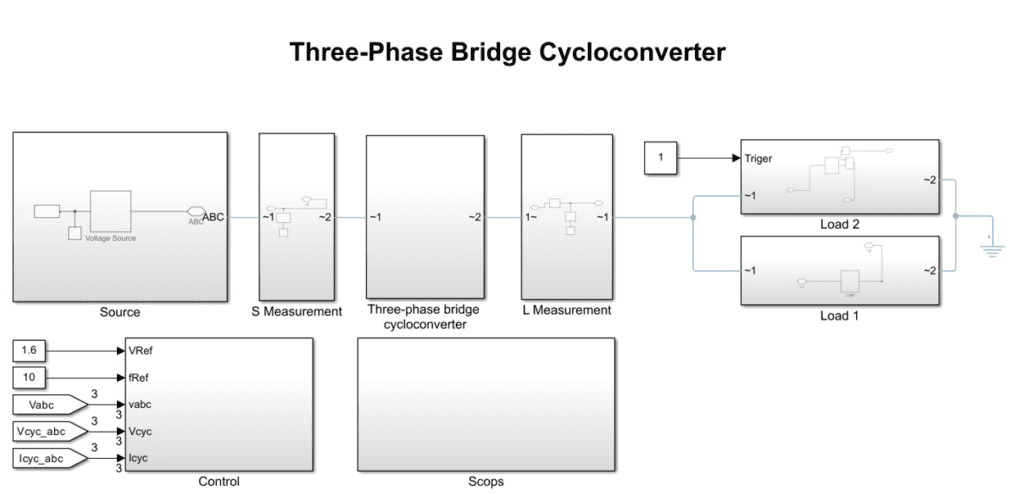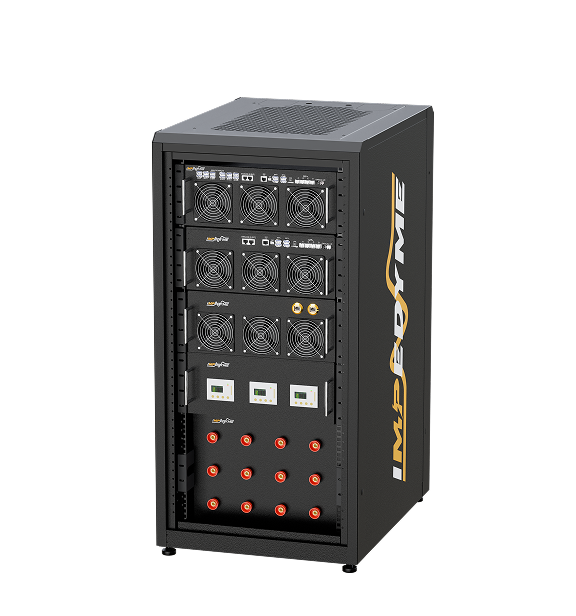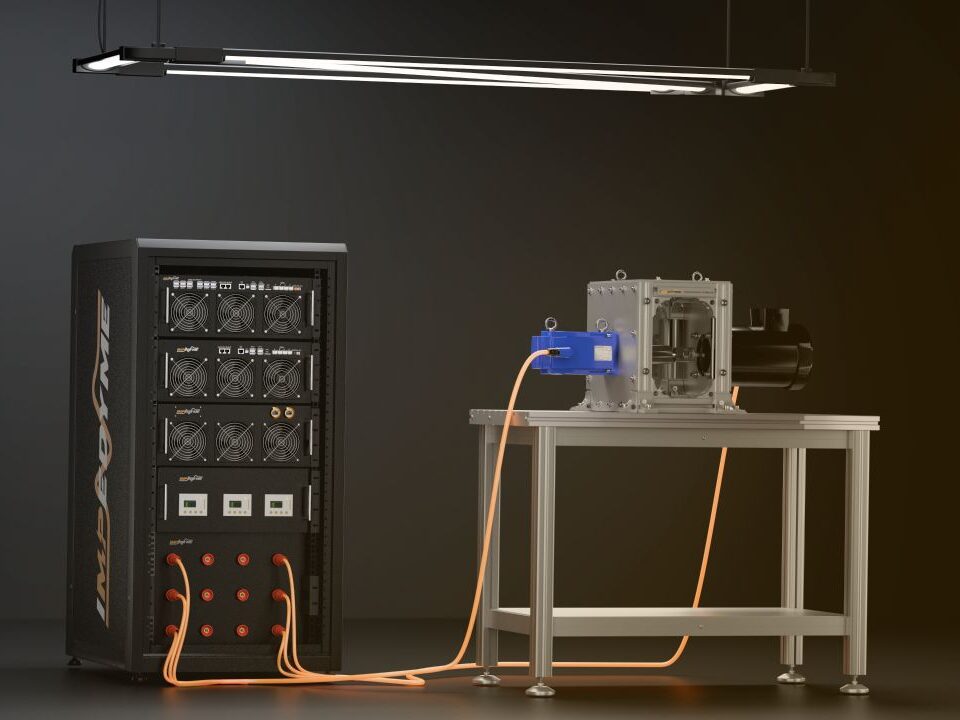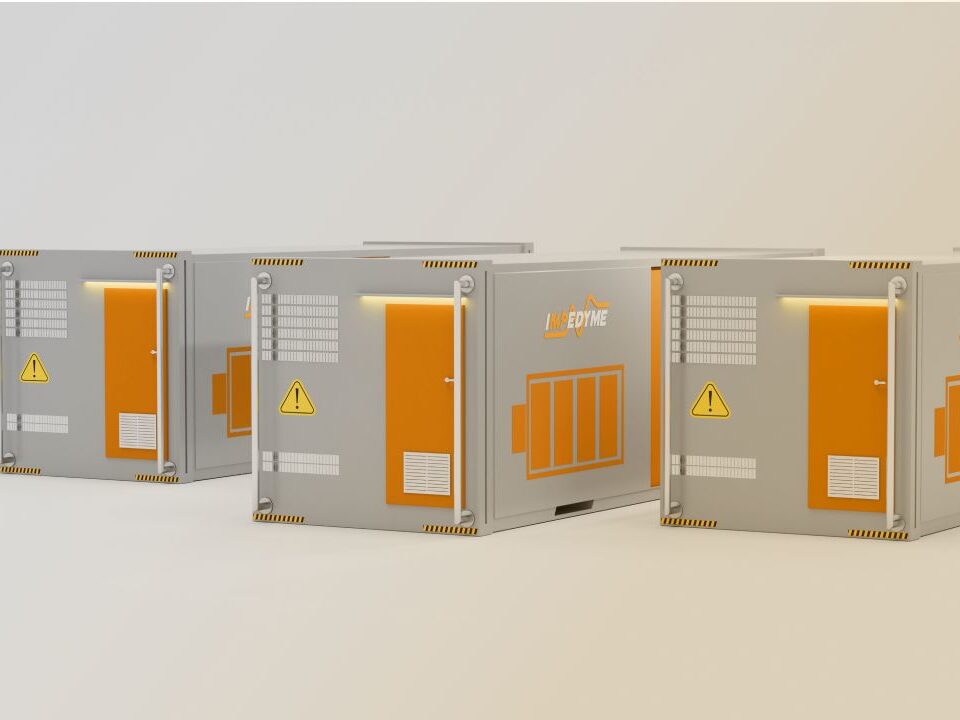
-
 Induction Motor
Induction Motor
-
 Automotive Electrical System Simulation
Automotive Electrical System Simulation
-
 DC/DC Bidirectional Converter
DC/DC Bidirectional Converter
-
 PWM Control for Brushless DC
PWM Control for Brushless DC
-
 BLDC Motor Control and Drive Simulation
BLDC Motor Control and Drive Simulation
-
 Electric Vehicle Fast Charger Simulation
Electric Vehicle Fast Charger Simulation
-
 DFIG Wind Turbine Simulation
DFIG Wind Turbine Simulation
-
 Dual Active Bridge
Dual Active Bridge
-
 EV Dynamometer Test Environment Simulation
EV Dynamometer Test Environment Simulation
-
 Electric Vehicle Simulation
Electric Vehicle Simulation
-
 Three-Phase Grid-Connected Inverter Using Direct-Q…
Three-Phase Grid-Connected Inverter Using Direct-Q…
-
 Three-Phase Grid-Connected Solar Photovoltaic
Three-Phase Grid-Connected Solar Photovoltaic
-
 Grid-Connected Rectifier
Grid-Connected Rectifier
-
 Grid-Tied Inverter System
Grid-Tied Inverter System
-
 Torque Control in a Hybrid Excitation Synchronous …
Torque Control in a Hybrid Excitation Synchronous …
-
 Wye-Delta Starting Circuit
Wye-Delta Starting Circuit
-
 IPMSM-Based Axle-Drive
IPMSM-Based Axle-Drive
-
 Simplified Parallel Hybrid Electric Vehicle
Simplified Parallel Hybrid Electric Vehicle
-
 Simplified Series Hybrid Electric Vehicle
Simplified Series Hybrid Electric Vehicle
-
 Series-Parallel Hybrid Electric Vehicle
Series-Parallel Hybrid Electric Vehicle
-
 Three-Phase Matrix Converter Simulation
Three-Phase Matrix Converter Simulation
-
 Venturini Modulation for Three-Phase Matrix Conver…
Venturini Modulation for Three-Phase Matrix Conver…
-
 Microgrid Frequency Regulation Using Vehicle-to-Gr…
Microgrid Frequency Regulation Using Vehicle-to-Gr…
-
 Three-Phase Modular Multilevel Converter
Three-Phase Modular Multilevel Converter
-
 Field-Oriented Control
Field-Oriented Control
-
 Interior Permanent Magnet Synchronous Generator
Interior Permanent Magnet Synchronous Generator
-
 Permanent Magnet Synchronous Machine
Permanent Magnet Synchronous Machine
-
 PMSM Rotor Angular Velocity
PMSM Rotor Angular Velocity
-
 PMSM-Based Electrical Traction Drive
PMSM-Based Electrical Traction Drive
-
 Maximum Power Point Tracking
Maximum Power Point Tracking
-
 Six-Phase Permanent Magnet Synchronous Machine
Six-Phase Permanent Magnet Synchronous Machine
-
 Synchronous Machine-Based Electrical Drive Simulat…
Synchronous Machine-Based Electrical Drive Simulat…
-
 Single-Stage Solar Inverter
Single-Stage Solar Inverter
-
 Three-Phase Cycloconverter Simulation
Three-Phase Cycloconverter Simulation
-
 Totem-Pole PFC Simulation
Totem-Pole PFC Simulation
-
 Twelve-Pulse Thyristor Rectifier
Twelve-Pulse Thyristor Rectifier
-
 Two-Wheeler On-Board Charger
Two-Wheeler On-Board Charger
-
 Vienna Rectifier Simulation
Vienna Rectifier Simulation
-
 High-Voltage Direct Current
High-Voltage Direct Current
-
 Wireless Power Transfer
Wireless Power Transfer

Comprehensive Documentation for Three-Phase Cycloconverter Simulation
Table of Contents
- 1 Comprehensive Documentation for Three-Phase Cycloconverter Simulation
- 1.1 Introduction
- 1.2 System Overview
- 1.2.1 What is a Cycloconverter?
- 1.2.2 Purpose of the Simulation
- 1.3 Key Features
- 1.3.1 Low-Frequency Output Generation
- 1.3.2 Bidirectional Power Flow Control
- 1.3.3 Harmonic Mitigation Strategies
- 1.4 Simulation Objectives
- 1.5 Technical Description
- 1.5.1 System Configuration
- 1.5.2 Control Methodology
- 1.6 Advantages of Cycloconverters
- 1.7 Applications
- 1.8 Simulation Benefits
- 1.9 Summary
- 1.10 Future Enhancement
- 1.11
- 1.11.1 Induction Motor
- 1.11.2 Automotive Electrical System Simulation
- 1.11.3 DC/DC Bidirectional Converter
- 1.11.4 PWM Control for Brushless DC
Introduction
The Three-Phase Cycloconverter Simulation is a detailed model designed to demonstrate direct AC-AC power conversion using a cycloconverter topology. This approach allows frequency conversion without an intermediate DC stage, making it ideal for large motor drives and industrial applications requiring precise speed control. The simulation falls under Power Transmission, highlighting its significance in scenarios where efficient and flexible frequency adaptation is required.

System Overview
What is a Cycloconverter?
A cycloconverter directly converts three-phase AC power at one frequency to a lower output frequency using controlled thyristor switching. Unlike matrix converters, it is limited to step-down frequency conversion, making it suitable for applications requiring low-speed operation.
Purpose of the Simulation
The simulation aims to:
- Demonstrate the principles of direct AC-AC conversion.
- Validate power quality, efficiency, and control strategies.
- Analyze the impact of input disturbances on output performance.
Key Features
Low-Frequency Output Generation
The cycloconverter generates low-frequency AC output by phase-controlled switching of thyristors. ➡️ HIL/PHIL Benefit: Real-time simulation helps in evaluating performance under different load conditions and ensures the proper synchronization of switching sequences.
Bidirectional Power Flow Control
Cycloconverters allow bidirectional power flow, making them suitable for regenerative braking applications. ➡️ HIL/PHIL Benefit: Impedyme platforms can simulate grid and load interactions, verifying safe bidirectional power exchange in real-world scenarios.
Harmonic Mitigation Strategies
Cycloconverters produce harmonics due to their switching nature, necessitating advanced filtering and control techniques. ➡️ HIL/PHIL Benefit: Various harmonic mitigation techniques can be tested in a controlled simulation environment to ensure compliance with power quality standards.
Simulation Objectives
This simulation helps evaluate:
- Direct AC-AC conversion quality.
- Effectiveness of switching strategies.
- Input power factor performance.
- Power transfer efficiency. ➡️ HIL/PHIL Benefit: These evaluations transition smoothly from simulation to real hardware testing, ensuring practical implementation feasibility.
Technical Description
System Configuration
- Input: Three-phase AC supply (grid or generator).
- Output: Three-phase AC load (induction motor, resistive/inductive loads).
- Power Stage: Thyristor-based cycloconverter bridge.
Control Methodology
- Phase angle control for step-down frequency conversion.
- Control goals: reduce harmonics, maintain stable output voltage, and optimize power factor. ➡️ HIL/PHIL Benefit: Real-time control strategies can be implemented and tested under different operational conditions using Impedyme’s HIL/PHIL solutions.
Advantages of Cycloconverters
- Efficient Low-Frequency Conversion: Ideal for applications requiring variable-speed operation at low frequencies.
- Direct AC-AC Conversion: Eliminates the need for an intermediate DC stage, reducing component count and size.
- Regenerative Capability: Enables energy recovery in motor drive applications. ➡️ HIL/PHIL Benefit: Each of these features can be validated across the full development cycle (RCP → HIL → PHIL) using Impedyme’s platforms.
Applications
- Large Motor Drives: Speed control for industrial motors and rolling mills.
- Ship Propulsion Systems: Efficient frequency conversion for marine applications.
- Mining Equipment: Precise speed regulation for hoists and conveyors. ➡️ HIL/PHIL Benefit: Real-time emulation and testing accelerate the development of tailored solutions for each application.
Simulation Benefits
With this simulation, users can:
- Explore cycloconverter dynamics in detail.
- Test advanced control algorithms.
- Assess power quality and efficiency.
- Evaluate transient response to grid/load variations. ➡️ HIL/PHIL Benefit: These insights translate directly to hardware using Impedyme’s PHIL, ensuring the real device meets design specifications.
Summary
The Three-Phase Cycloconverter Simulation demonstrates a reliable AC-AC conversion method suitable for industrial applications requiring low-frequency operation. By integrating Impedyme’s HIL and PHIL solutions, the entire development workflow is optimized:
| Development Stage | Impedyme’s Contribution |
|---|---|
| Control Design | RCP using HIL for rapid algorithm validation |
| Control Hardware Testing | CIL with real-time cycloconverter models |
| Power Stage Verification | PHIL with real voltage and power interaction |
| Final Validation | Full-system PHIL under realistic grid and load conditions |
Future Enhancement
- Integration of advanced modulation techniques for harmonic minimization.
- Compliance testing for industry standards.
- Fault-tolerant control strategies.
- Renewable energy integration with real-world microgrid applications.
The combination of a Three-Phase Cycloconverter Simulation with Impedyme’s HIL/PHIL platforms ensures a streamlined development process—from concept validation to real-world implementation. This approach enables faster deployment, reduced design risks, and improved reliability for next-generation power conversion systems.






